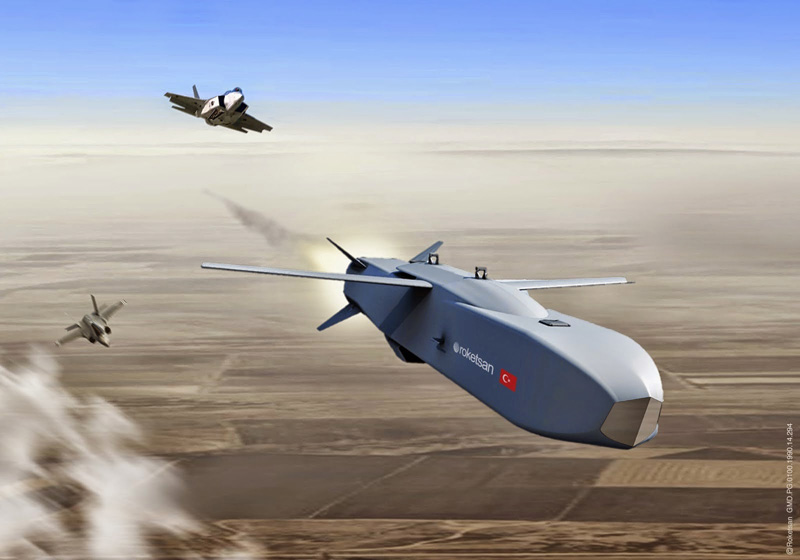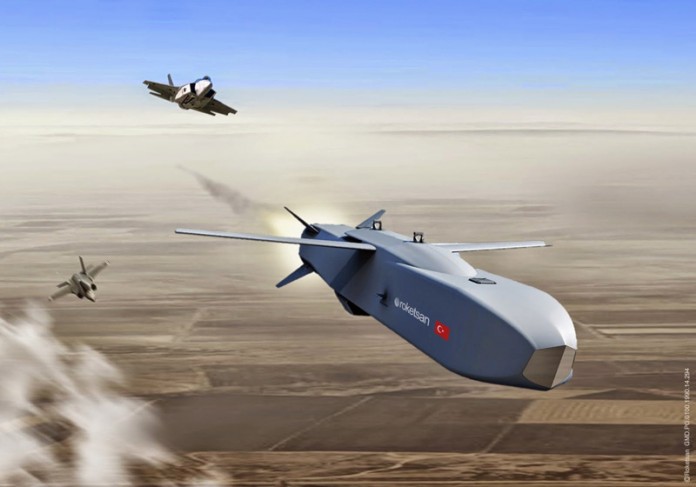
Roketsan and Lockheed Martin signed a teaming agreement for the integration of a variant of Turkey’s new SOM cruise missile for the F-35 Lightning II. The companies agreed to jointly develop, produce, market and support SOM-J for internal carriage on the F-35 aircraft or external carriage on other aircraft. This ‘J’ version of the cruise missile will be designed to be more compact than the original design, equipper with folding control surfaces and a rocket booster.
The SOM system is an autonomous, long-range, low-observable, all-weather, precision air-to-surface cruise missile. The SOM-J variant is tailored for internal carriage on the F-35 aircraft.
This formal agreement builds on a previous announcement by Lockheed Martin last year, that the SOM cruise missile will be certified and adapted as part of the F-35 weaponry. Both SOM and Norwegian Joint Strike Missile (JSM) are expected to be available for the F-35 along with Small Diameter Bomb II (GBU-53) and Joint Stand-Off Weapon – JSOW (AGM-154C1) and Israeli Spice 1000 for internal carriage, as part of Block 4 in 2021.
Lockheed Martin Missiles and Fire Control Executive Vice President Rick Edwards and Roketsan Chairman of the Board Eyüp Kaptan signed the agreement. The integration of SOM as part of the weapon mix of the F-35 was one of the demands posed by the Turkish government pursuing procurement of the F-35. In May 2014 Turkey placed an order for the first two F-35A Lightning II Joint Strike Fighter (JSF) aircraft, but has yet to fully approve the planned acquisition of 100 aircraft. The first two Block-3F configuration will be delivered in 2018, as part of the Low Rate Initial Production-10 (LRIP-10).
The SOM is being developed by the Scientific and Technological Research Council of Turkey, (TUBITAK-SAGE). The first guided flight was performed in August 2011, and followed by initial deliveries of the missile the next year. The initial version of the missile was designed to strike land targets at ranges of 180 – 250 km. Enhanced versions are also in development, offering extended range capability of 500, 1500 and up to 2,500 km. The subsonic (Mach 0.94) missile weigh 600 kg and carries a penetration or high explosive fragmentation warhead at a weight of 230 kg (507 lb). The missile has demonstrated strike precision of less than 10 meters (down to five meters) at ranges of 300 km (160 nm). It is designed to attack surface targets on land and at sea.
SOM is the first indigenous standoff attack weapon developed in Turkey. Prior to the introduction of this missile the TuAF was using the Israeli AGM-142 ‘Popeye’ standoff attack missiles on its F-4E Phantom strike fighters, which were also upgraded by Israel.





















